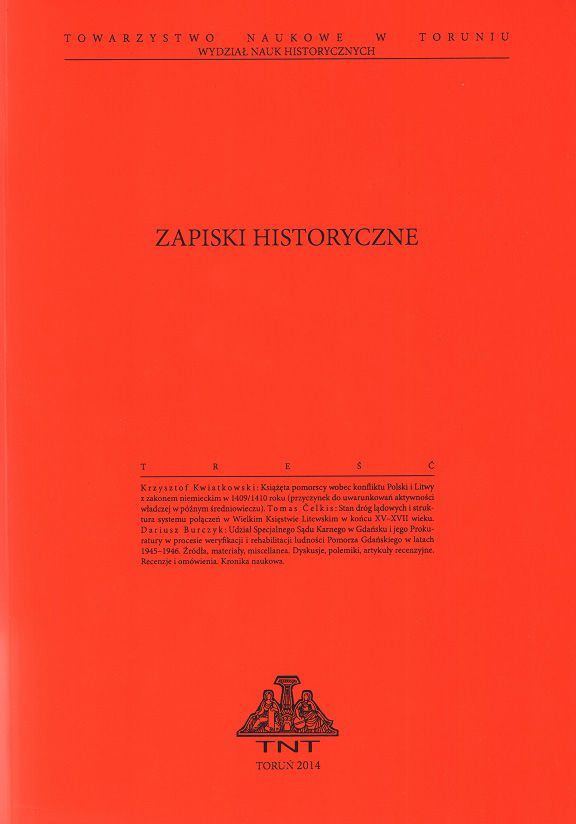Dwa posoborowe projekty reorganizacji struktur kościelnych w Polsce z drugiej połowy lat sześćdziesiątych XX wieku
Two Post-council Project for the Reorganization of Church Structures in Poland in the Second Half of the 1960s
Author(s): Michał BiałkowskiSubject(s): History of Church(es), Political history, Post-War period (1950 - 1989), Source Material, History of Religion
Published by: Towarzystwo Naukowe w Toruniu
Keywords: the Catholic Church;the Second Vatican Council;the Decree Christus Dominus;the Archdiocese Archive of Warsaw;the Polish church province;administrative divisions of the Catholic Church in Poland;
Summary/Abstract: The geopolitical situation of Poland after the end of WWII had a major influence on the situation of the Catholic Church, particularly its administrative structures. The new shape of the borders entailed the loss of a significant part of the Lviv and Vilnius archbishoprics. On the other hand, the incorporation of the eastern provinces of Germany – the Western and Northern Territories – involved the construction of new church structures. Polish bishops headed by Primate August Hlond, and later Stefan Wyszyński, embarked on the long-term endeavour to regulate the canonic status of the Church in the so called Recovered Territories. However, the complicated legal-international situation was becoming even more complex owing to frequent interference from the communist authorities. It was not until the October breakthrough of 1956 that a state of relative stability began in the Western and Northern territories for the church structures. Upon the post-council restoration of the Church – directly after the closure of the Second Vatican Council – the church structures began to be reorganized in Poland. Two projects were run, encompassing the complex proposals regarding the whole territory of the Polish People’s Republic. The first project constituted the comprehensive study of 1967, which was probably generated by the Wrocław entourage under the auspices of Archbishop Bolesław Kominek. The document stipulated that the borders of the dioceses should be adjusted to the current administrative division of the state. Seven provinces were to be established: the provinces of Gdansk, Gniezno, Katowice, Cracow, Lublin, Warsaw and Wrocław. The 1967 project broke away from the former administrative divisions of the Catholic Church in Poland. Nevertheless, such revolutionary solutions were rejected by the members of the Main Council of the Polish Episcopate headed by Primate Stefan Wyszyński. Three years later in 1970, a new project was designed. This also stipulated the creation of seven provinces, the names of which were taken from geographical regions. Like the former one, this project also did not go beyond preliminary preparations owing to the radical solutions it proposed (e.g. the liquidation of the archbishopric of Gniezno) and the current international situation – the unsettled question of the Polish western frontier. Both documents allow us to appreciate the significant extent of the Church’s involvement in the process of the post-council reorganization of administrative structures in Poland.
Journal: Zapiski Historyczne
- Issue Year: 82/2017
- Issue No: 3
- Page Range: 127-146
- Page Count: 22
- Language: Polish

